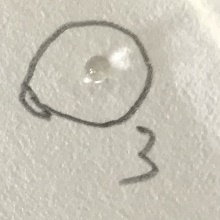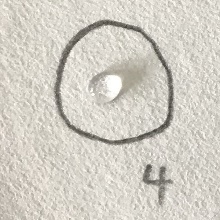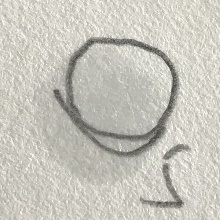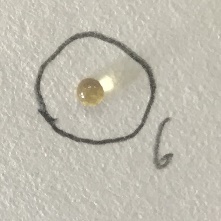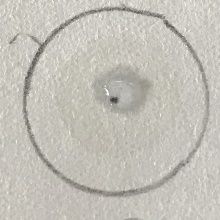微流控色谱分离体系研究毕业论文
2020-04-17 15:07:15
摘 要
平面色谱作为目前仍然广泛应用的传统色谱方法,具有成本低廉、操作方便,对分离物前处理要求较低等优点,但同时也存在分辨率较低,通量小等缺点;微流控纸芯片作为最新的微流控实验室分类,同样具有成本低廉,操作简便等特点,然而现有的芯片上检测只是用到微流控流体输运的功能,而在分子水平上的分离并没有体现其作用,这与它的设计初衷不符。此前微流控芯片上分子水平上的分离主要形式是芯片通道毛细管电泳和填充电色谱等,然后因为加工难度和效果,直接限制了微流控芯片的分离能力。本论文采取与前人工作相反的策略,尝试在色谱上构建微流控通道,目标是提高微流控色谱分离能力。因此首先要解决构建微流控通道所需材料和方法选择的问题。先通过疏水,疏油以及双疏材料的选择实验,选取最合适在滤纸上构建微流控通道的材料;在平面色谱材料上直接绘制微流控通道,验证通道的分隔效果和牢靠程度,探索将其用于生物检测,化学检测等方面的应用。
关键词:纸微流控芯片 平面色谱分离 聚乙烯醇 石蜡
Abstract
As a popular chromatographic project, planar chromatography has the advantages of low cost and requirements for separation materials, but it also has the disadvantages of high mobile phase flow requirements, poor shunting effect and low resolution; microfluidic paper ,the latest microfluidic laboratory classification, the chip is also characterized by low cost and easy operation. At the same time, as a member of the microfluidic family, the microfluidic paper chip has advantages in shunting. In contrast, the separation of microfluidic paper chips is difficult and requires high-cost instrumentation, which is inconsistent with its original design. Therefore, finding a solution that combines the advantages of both, which has advantages in both shunting and separation, has become a completely new idea.
The goal of this experiment is to first select the most suitable hydrophobic, oleophobic and double-sparing materials to construct a microfluidic channel on the filter paper through the selection experiments of hydrophobic, oleophobic and double sparse materials; then select the appropriate planar chromatographic system. It is realized on the filter paper and directly draws the microfluidic channel on the plane chromatogram. It is used to try to make the chip which has great advantages in separation and shunt, and it will be applied in biological detection and chemical detection in the future. Lay a solid foundation.
Keywords: paper-based microfluidic chip; plane chromatographic separation; polyvinyl alcohol; parffin
目录
摘要 I
Abstract II
第一章 绪论 5
1.1平面色谱 5
1.1.1平面色谱 5
1.1.2纸色谱法 5
1.1.3薄层色谱法 6
1.1.4薄层电泳法 6
1.1.5薄层色谱法的优点与不足 6
1.2微流控 6
1.2.1 微流控芯片 6
1.2.2 微流控分离的发展与应用 7
1.3本论文研究的内容和意义 9
第二章 实验部分 10
2.1 实验仪器和试剂材料 10
2.1.1 实验仪器 10
2.1.2 试剂与材料 10
2.2 疏水,疏油,双疏材料的疏液效果验证实验 11
2.2.1 滤纸蜡通道的制备 11
2.2.2 疏液材料在滤纸上的疏液效果验证实验 11
2.3 滤纸上丹参酮分离实验 11
2.4 滤纸上叶绿素分离实验 12
第三章 结果与展望 13
3.1疏水,疏油以及双疏材料的选择与用量 13
3.1.1滤纸上蜡通道的疏液效果验证 13
3.1.2双疏材料的实验结果 14
3.1.3聚乙烯醇的实验结果 15
3.2滤纸上丹参酮的分离 16
3.3滤纸上叶绿素的分离 17
第四章 结论与展望 17
参考文献 19
致谢 22
第一章 绪论
1.1平面色谱
20世纪初,科学家在对植物的色素进行分离研究时,提出了“色谱”的概念。今天,色谱的定义已经拓宽了许多,成为了研究分离时不可或缺的技术,并形成了一门独立的新学科[1]。色谱的原理是利用不同物质分配系数,吸附解吸附等性能的不同,从而将两者分离出来。色谱根据分离方式的不同,分为柱色谱和平面色谱两种。
1.1.1平面色谱的历史
平面色谱法出现较早。1938年意大利科学家使用微量圆环技术在涂布了氧化铝薄层载玻片上进行植物酊剂的分离,是已知最早的平面色谱法。1944年 R.Consden,A.H.Gondon和A.J.P.Martin尝试用纸做载体分离了蛋白质水解液中的氨基酸,由此出现了纸色谱法[2]。1946年 R.Consden等人用硅胶薄层进行氨基酸电泳以及用纸,醋酸纤维,纤维素或淀粉,聚丙烯酰胺凝胶,琼脂糖凝胶等支持物做成薄膜或薄层的电泳法统称为薄层电泳[3]。20世纪五十年代,J.G.Kirchner[4]等人在氧化铝薄膜上以硅胶为吸附剂,再用煅石膏黏合,制成了硅胶薄板,大大发展了薄层色谱法。随着科技的发展以及检测仪器精度的提高,二十世纪八十年代,使用高效薄层板进行组分的分离,同时使用仪器来代替原来的手工操作,使得定量结果的准确性及重现性大大提高。
1.1.2 纸色谱法
以上是毕业论文大纲或资料介绍,该课题完整毕业论文、开题报告、任务书、程序设计、图纸设计等资料请添加微信获取,微信号:bysjorg。
相关图片展示:
